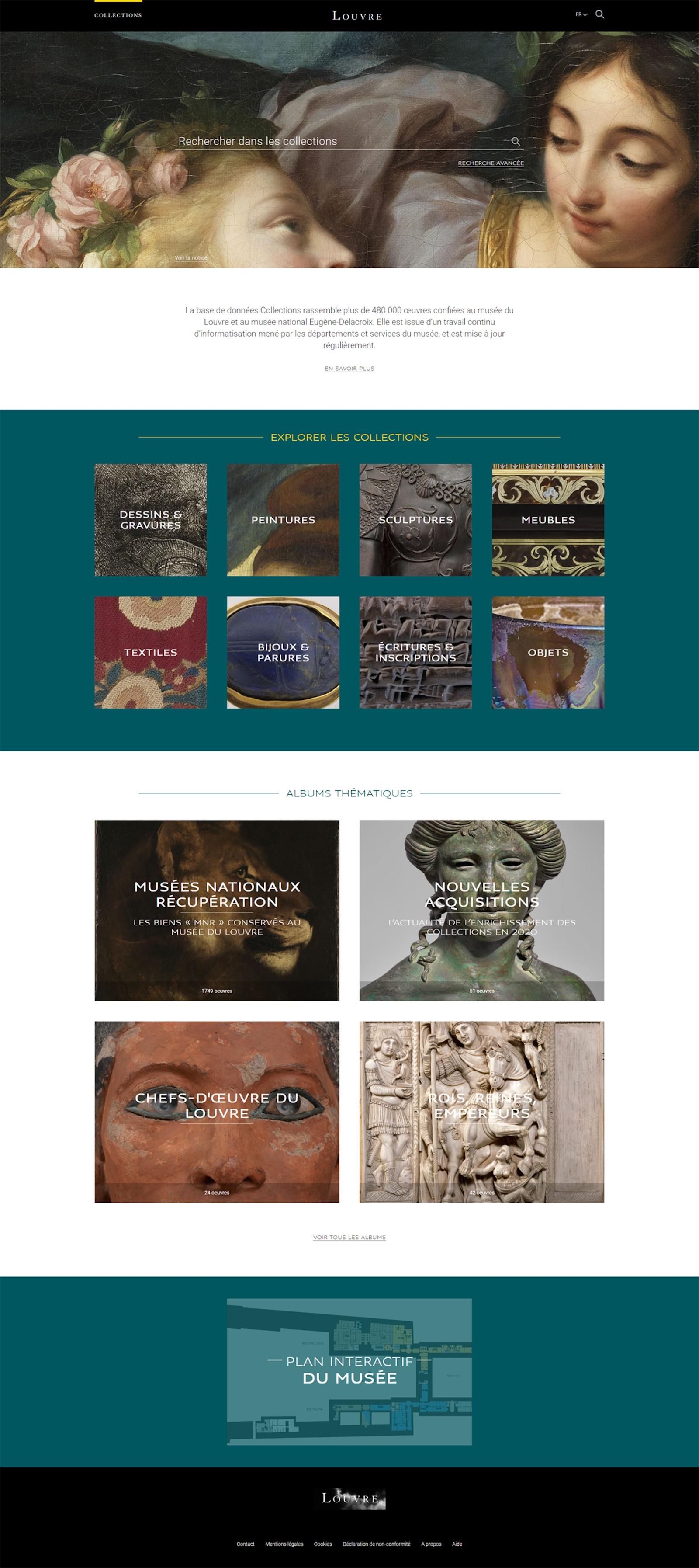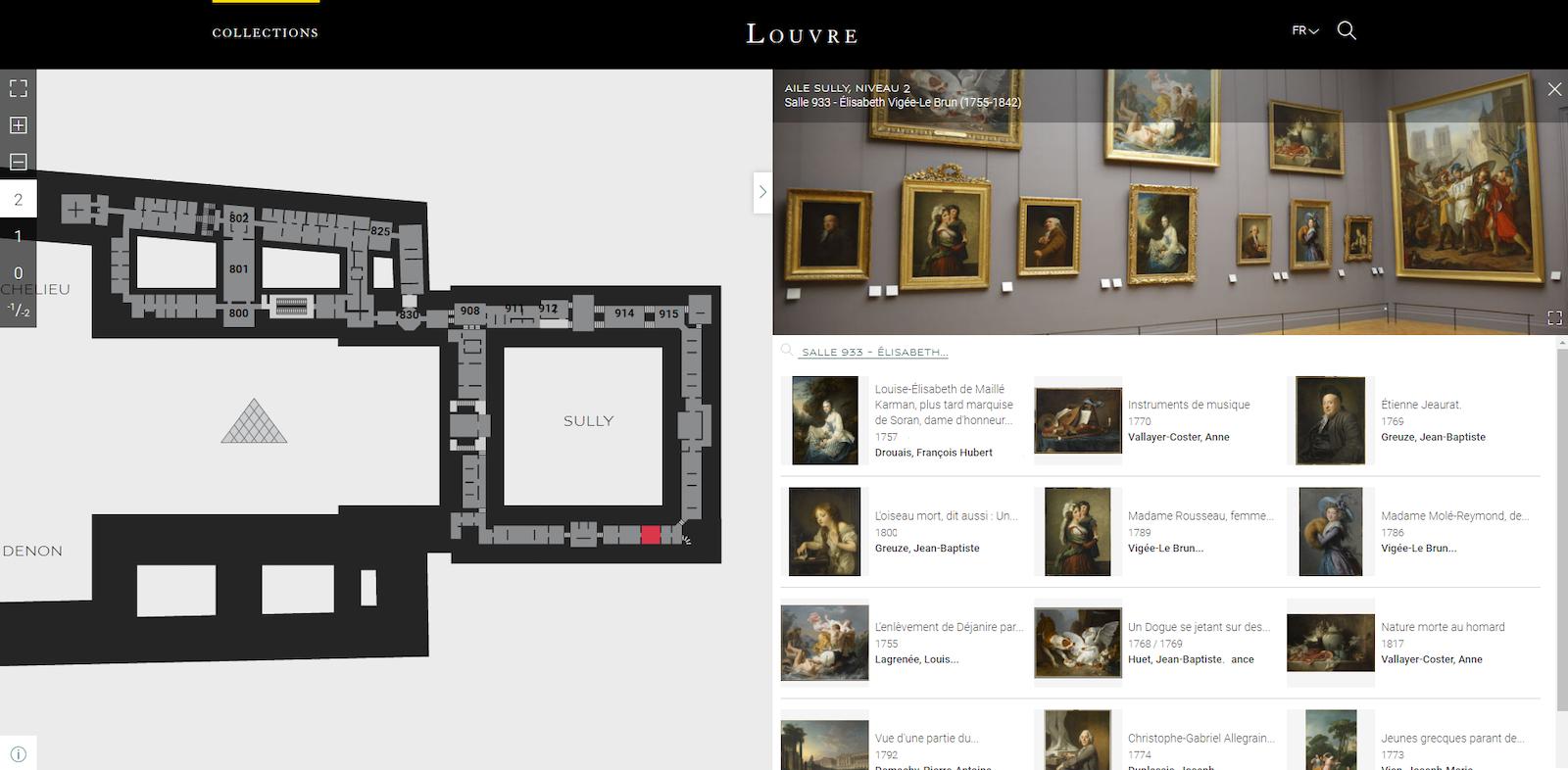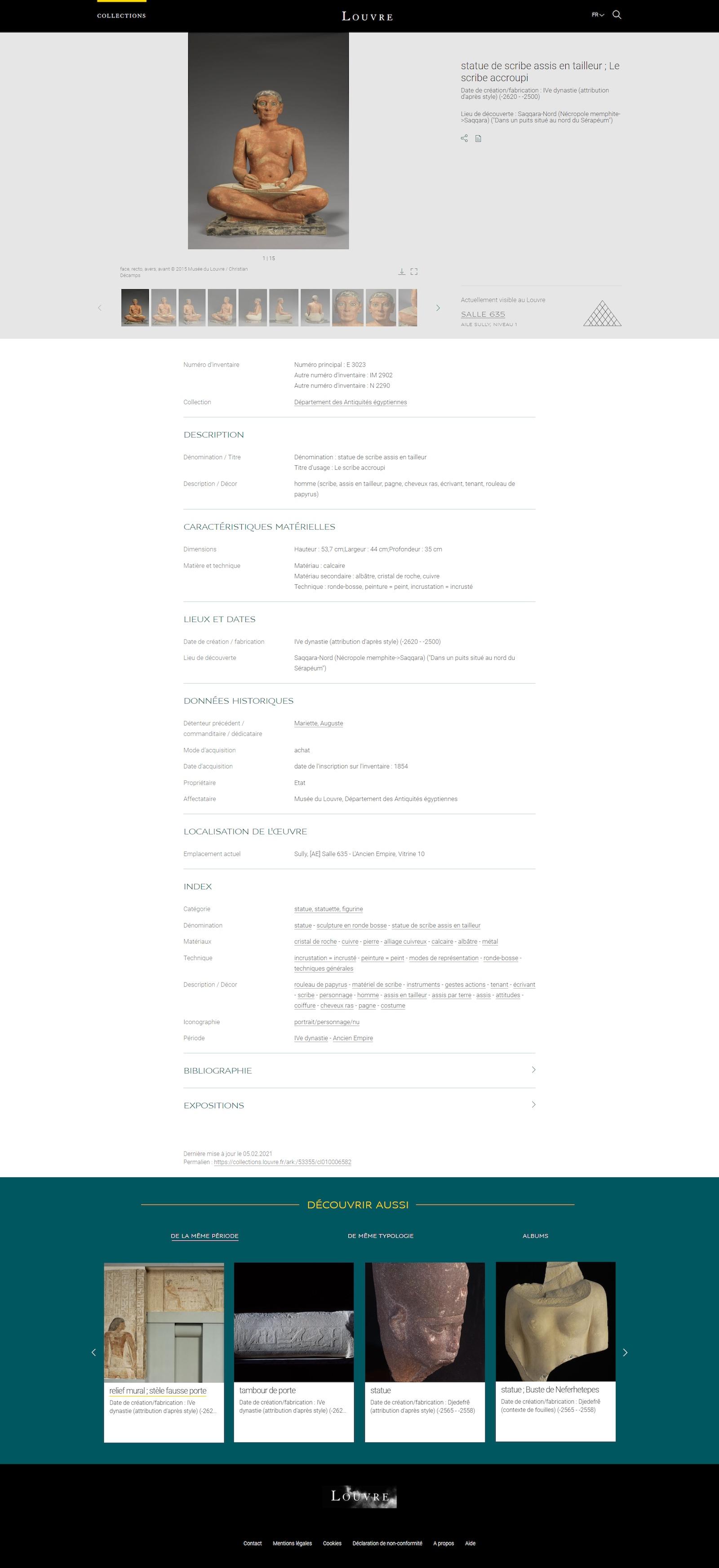"Today, the Louvre is dusting off its treasures, even the least-known," says Jean-Luc Martinez, President-Director of the Musée du Louvre. "For the first time, anyone can access the entire collection of works from a computer or smartphone for free, whether they are on display in the museum, on loan, even long-term, or in storage. The Louvre’s stunning cultural heritage is all now just a click away! I am sure that this digital content is going to further inspire people to come to the Louvre to discover the collections in person."
In October 2019, the Louvre inaugurated a new conservation center in Liévin to house works that were previously held in storage spaces at risk of potential flooding of the Seine. Before the move, each curatorial department carried out an extensive campaign to inventory and photograph a very large number of works. Putting the collections online is the last step of this formidable accomplishment.
The new website will record all of the Louvre’s artworks, be they on display at the museum, on long-term loan in other institutions, or in storage.
It currently consists of more than 482,000 entries (most with images), i.e. approximately seventy-five percent of the museum’s collections. It replaces the former Atlas database, which was well-known by visitors and researchers but which only covered works on display.
Each entry consists of scientific data about the given work of art: title, artist, inventory number, dimensions, materials, and techniques, date, and place of production, object history, current location, and bibliography. The wealth of images in the database is an indispensable resource for researchers and visitors alike. These documentary entries, drawn up by museum curators and researchers, come from two museum collection databases and are updated on a daily basis.
To foster knowledge-sharing, the Musée du Louvre has adopted an open data approach for all entries.
In a decidedly cross-disciplinary approach, collections.louvre.fr offers several gateways to explore the collections: by curatorial department, themed albums, broad categories ( e.g. textiles, paintings, furniture, etc.). The search tools help visitors easily find all the works by the same artist who made, for example, paintings, drawings, and sculptures. Advanced searches and filters allow for refined searches by curatorial department, place of exhibition, date of creation, artist, etc. Users can explore the collections by going back and forth between entries to discover other works by the same artist, from the same period, or in the same category of works, for example.
Curated, themed albums group works into a given theme: for example, masterpieces, new acquisitions, MNR works (Musées Nationaux Récupération, or National Museums Recovery: artworks recovered after WWII and entrusted to the Louvre for safekeeping until they can be returned to their legitimate owners), etc.
































